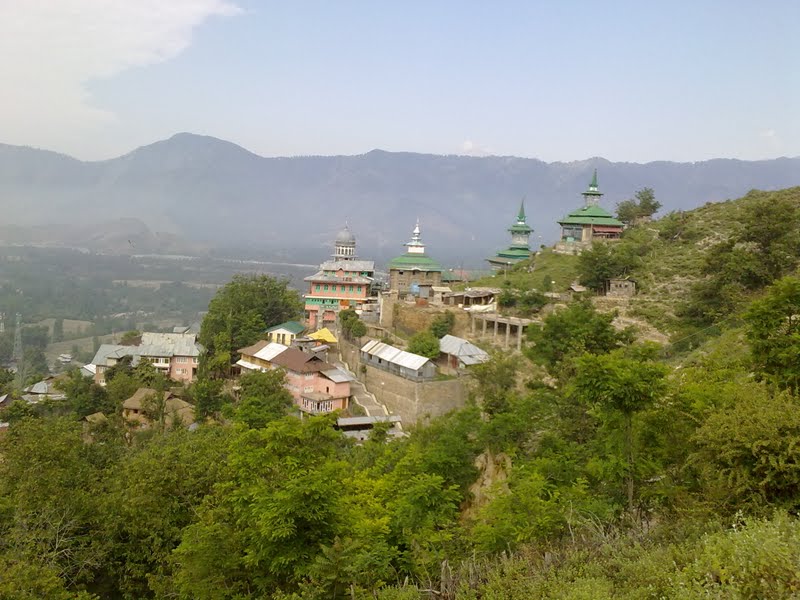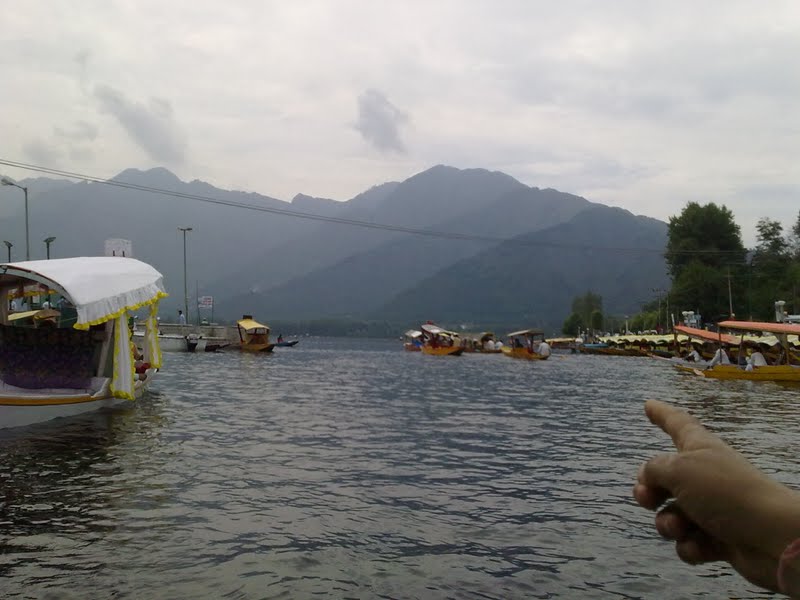| PLACES |
| India: Places | Picture Description |
|---|---|
| |
Agra
Location : Agra
This house is just right next to the Taj Mahal.
|
| Agra
Location : Agra This is a view of the Taj Granj, the place where 20,000 workers stayed while they built the Taj Mahal over 6 years. running around on the streets. | |
| Agra
Location : Agra
In Agra people engaged in a ceremony. | |
| Delhi
Location : Delhi
A typical street scene of Delhi. | |
| Mahatma Ghandi's Tomb
Location : Delhi
The tomb of the man who liberated India from the UK. | |
| Jama Masjid
Location : Agra
The Famous Jama Masjid.The mosque of Friday (Jama Masjid),
was built from 1644 to 1658 in the reign of Shah Jahan.
The mosque which measures 65m on 35m, and whose court
forms a square of 100m on side is by its surface the
greatest religious construction of Islam.
| |
| Red Fort
Location : Agra The Red Fort, owes its name from building material out of red sandstone which was used to raise the fortress and the palace of the Moghol emperor Shah Jahan between 1639 and 1648. The enclosing walls the 16 metres high surround a surface of almost 600 000 m2 where palaces and mosques rise, stretch courtyards and gardens. This is where the Shah Jahan was imprisoned for the last 7 years of his life by his 13th son, Auranzigeb, for the wanton irresponsible spending of his dad. | |
| Peacock Throne
Location : Agra The famous Peacock throne. | |
| Taj Mahal
Location : Agra
One of the most Beautiful buildings in the world :
the Taj Mahal (Crown Palace) in Agra, India.
| |
| Taj Mahal
Location : Agra
This building is very cerebral. Designed on the
coattails of the Rennaissance movement in Italy,
mathematical perfection can be seen in the fractal
structure of the building. It was designed in fact
by an Italian architect. A large pattern is
repeated, shrunk and replicated. Squares within
squares. And the floral pattern you see on the
outside is also repeated inside.
| |
| Taj Mahal
Location : Agra In 1612, Arjumand Banu Begam, better known as Mumtaz Mahal was married to Shah Jahan (then Prince Khurram), the fifth mughal emperor. This marriage, although the emperor's second, was a real love-match. Mumtaz was Jahan's inseparable companion on all his journeys and military expeditions. She was his comrade, his counsellor, and inspired him to acts of benevolence. She bore him fourteen children, and died in childbed in 1630 in Burhanpur in the Deccan. Shah Jahan wanted to perpetuate her memory for immortality and decided to build his beloved wife the finest sepulchre ever - a monument of eternal love. This everlasting love for Mumtaz that led to the building of the Taj Mahal. The sad circumstances which attended the early death of the empress who had endeared herself to the people inspired all his subjects to join in the emperor's pious intentions. After twenty-two laborious years, and the combined effort of over twenty thousand workmen and master craftsmen, the complex was finally completed in 1648 on the banks on the river Yamuna in Agra, the capital of Mughal monarchs. | |
| Taj Mahal
Location : Agra
A view from the Backside of the Taj Mahal from
a boat. The Back of the Taj Mahal overlooks the Yamuna River.
| |
| Kanpur
Location : Kanpur
The city of is a bustling crowded metropolis of 2 million.
A typical grimy industrial town if ever there was one.
The old inner core of Kanpur is very run down, and low-tech.
This is true of many Indian Cities I visited.
| |
| Varanasi
Location : Varanasi
Varanasi is one of the 3 holiest Hundu cities in the world.
People make the pilgrimage of a life-time to come here
and bathe in the (pulluted), but holy Ganges river.
So many people come here to bathe that it is a huge pollution
problem. 22 sewer exit points discharge next to the Bathing
Ghats. The water has 1.5 million faecal colliform bacteria
per 100 milliliters of water, where normal safe drinking and
bathing wather has less than 500.
| |
| Varanasi
Location : Varanasi
People also come to Varanasi to die. They believe that
this will help them along in the afterlife.
So many people come here to die that bodies are creamated
(burned). But there isn't enough wood to cremate the bodies
fully. They are tossed in the Holy Ganges River.
So many bodies have been throw in the Ganges that over
time, a certain species of Frog has evolved to eat
human flesh.
| |
| Countryside of Uppra Pradesh
Location : Countryside
I spent dozens of hours on trains. Here is a typical
view of the beautiful Indian countrysize. Indian
countrysides are not that densely populated. This is
stark contrast to the metropolitan areas, which are a
beehive of humanity.
| |
| Bodh Gaya
Location : Bodh Gaya
This craftsman is just down the main street of Bodh-Gaya.
Just minutes later, a lady will walk by me picking up
dung from off the roads with her hands. I considered that
would be highly impolite to take a picture of that.
But you can picture it in your mind.
| |
| Bodh Gaya
Location : Bodh Gaya
A view of Bodh-Gaya's main street.
| |
| Jagdispur Village
Location : Bodh Gaya
Some of the local villagers.
| |
| Jagdispur Village
Location : Bodh Gaya
A view of a few of the homes in Jagdispur village.
| |
 |
Jammu Kashmir
Location : Jammu Kashmir A mountainside view of Jammu Kashmir with a Shrine. |
 |
Jammu Kashmir
Location : Jammu Kashmir Jammu and Kashmir is part of the larger Kashmir region, subject to dispute between India, Pakistan and China since the mid-20th century. It was the former princely state of Jammu and Kashmir. Now Azad Kashmir and Gilgit-Baltistan are administered by Pakistan. The Aksai Chin region in the east, bordering Tibet, has been under Chinese control since 1962. India repealed the special status accorded to Jammu and Kashmir. The Parliament of India dissolved the state and reorganised it into two union territories: Jammu and Kashmir in the west and Ladakh in the east in Oct 2019. Jammu and Kashmir is the only Muslim-majority state. This is a mountain in the Himalayan Range. The lake is Dal Lake. |